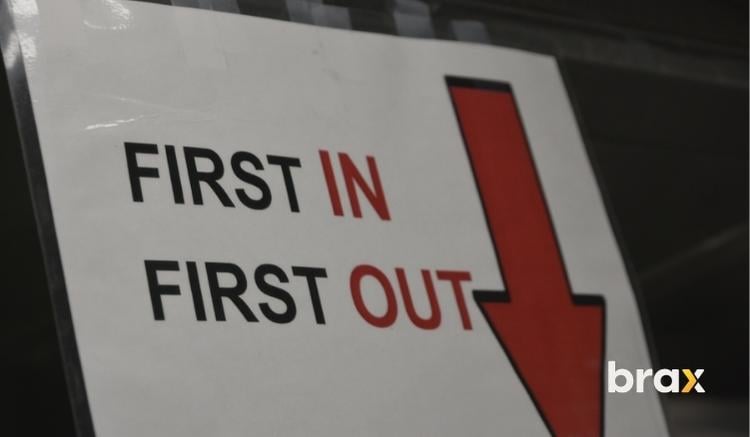The next time you find yourself worrying about your ad's position in the SERP and wondering if position #2 or #3 is good enough, don't reach for another cup of coffee—reach for this article instead. In it, we'll explore the phenomenon known as the serial position effect and how you can use it to your advantage.
We'll also dispel some common myths about advertising so that you can rest easy knowing that you're on the right track. So what are you waiting for? Curl up with a cup of coffee and settle in for a deep dive into the world of marketing psychology.

If you've ever spent hours agonizing over whether to place your ad at the top of the page or the bottom, you're not alone. For years, marketers have been trying to figure out the best way to utilize the serial position effect in their favor. But what is this effect, and how can you use it to your advantage?
The serial position effect is a phenomenon in psychology that refers to the fact that people are more likely to remember information that is presented at the beginning or end of a list. This means that if you want people to remember your ad, you're better off placing it either first or last.
Of course, this isn't always possible—or feasible. If you're selling a product that is in high demand, you may not be able to get your ad seen by as many people if you place it at the bottom of the page. Similarly, if you're selling a unique product, you may want to place your ad closer to the top so that people are more likely to see it.
At the end of the day, there's no one perfect solution for everyone. The best way to figure out what works for you is to learn how each of these concepts works to affect buying decisions and experiment with different placements and see what gets the best results.
Before experimenting with different placements, why don't we talk about the importance of ranking first and learn all about the Serial Position Effect?
What is Serial Position Effect in Psychology?
The serial position effect is a cognitive phenomenon that refers to the fact that people are better able to remember items at the beginning or at the end of a list.
This effect was first described by German psychologist Hermann Ebbinghaus in the late 19th century, and it has been replicated in countless experiments since then.
While the exact mechanism underlying the serial position effect is still not fully understood, it is thought to be related to the way information is encoded in short-term memory.
Items that are presented at the beginning of a list are typically encoded more deeply than items that are presented in the middle of the list.
Similarly, items that are presented at the end of a list are often encoded more deeply than the information at the beginning of the list.
This deeper level of encoding allows for better recall of these items. While the serial position effect is most often studied in the context of verbal memory tasks, it has also been found to occur with nonverbal stimuli, such as pictures and spatial locations.
The serial position effect has important implications for many different areas, including education, eyewitness testimony, and even advertising.
In Education
In terms of education, the serial position effect can be used to improve students' recall of information.
For example, teachers can start off a lesson by reviewing material that was taught at the beginning of the unit, and they can end the lesson by reviewing material that was taught at the end of the unit.
This will ensure that students encode the information deeply and are able to recall it more easily.
Eye-witness Testimony
The serial position effect can also have implications for eyewitness testimony.
Eyewitnesses to a crime are often shown a lineup of potential suspects, and they are asked to identify the perpetrator.
Studies have found that witnesses are more likely to choose the suspect who is standing at either end of the lineup.
This is known as the "end-of-series effect," and it is thought to be due to the serial position effect.

Advertising
In terms of advertising, the serial position effect can be used to increase the likelihood that people will remember an advertisement.
Advertisers can do this by placing their ads at the beginning or end of a list, such as in a TV show or a podcast.
Similarly, they can place their ads at the beginning or end of a webpage, social media feed, or most commonly—on search results.
By doing so, they are more likely to capture people's attention and increase the likelihood that people will remember their product.
While the serial position effect is a powerful phenomenon, it is important to note that it is not always reliable.
In some cases, people may remember items in the middle of a list better than an item that was presented at the beginning or end of the list, depending on the length of the list or how it was presented
Additionally, the serial position effect can be affected by a number of different factors, such as the type of material being learned, the level of attention paid to the material, and individual differences in memory.
Despite these limitations, the serial position effect is a well-established phenomenon with important implications for many different areas.
Types of Serial Position Effect Concepts and How They Affect Marketing
Anyone who's ever tried to remember a grocery list knows the frustration of the "serial position effect."
But did you know that there are actually two types of Serial Position Effects that can affect not just your own memory (and how you manage it), but can also how your audiences recall your brand better?
There are two classic experiments that demonstrate the power of serial position. In the first, subjects were asked to remember a list of words. The researchers found that people were more likely to recall words that were at the beginning and end of the list.
In the second experiment, subjects were again asked to remember a list of words. But this time, they were also asked to remember the last word on the list. The researchers found that people were more likely to recall words that were at the beginning or end of the list.
The Primacy Effect
The primacy effect is a well-documented phenomenon in psychology whereby people are more likely to remember items that appear at the beginning of a list than the items in the middle or end.
This effect has been shown to occur regardless of the list's length, presentation method, or content. Given its potential impact, it's no surprise that this phenomenon has been extensively studied by researchers in a variety of fields.
In marketing and advertising, the primacy effect can be put to use in a number of ways. For example, if a company is launching a new product, it makes sense to place ads for the product at the beginning of a TV commercial break or near the top of a web page.
By starting with the new product, advertisers can increase the likelihood that viewers will remember it when they're making their purchase decisions.

Similarly, if there's research that shows customers are more likely to buy a particular type of product when they see it first, retailers can make sure to stock their shelves accordingly.
The primacy effect can also be harnessed in pricing strategies; by presenting customers with lower prices first, businesses can encourage them to keep looking for even better deals, rather than stopping at the first reasonable option.
Of course, the primacy effect is not always advantageous. In some cases, it can actually lead to bad decisions. For example, if people are presented with a list of options and the first one sounds to be the best, they may be less likely to consider other options that could be just as good or even better.
Additionally, the primacy effect can interact with the sunk cost fallacy, leading people to continue investing in a losing proposition because they remember the initial investment more than the losses that have been incurred.
This is why some investment platforms for cryptocurrency and Forex prominently show your best trade, even when your subsequent results are awful. This can encourage you to keep investing even after a losing streak.
The primacy effect is a powerful phenomenon, but it's important to use it wisely. When used strategically, it can be a valuable tool for businesses and marketers. But when misused, it can lead to suboptimal decisions that cost both businesses and consumers.
The Recency Effect
The recency effect is the tendency for people to better remember items that are presented at the end of a list than those in the beginning or middle. Like the primacy effect, the recency effect has been shown to occur regardless of the list's length, presentation method, or content.
In marketing and advertising, the recency effect can be put to use in a number of ways.
For example, companies often place their most important messages at the end of commercials, knowing that viewers are more likely to remember them.
Advertisers may also use the recency effect to increase the impact of testimonials by placing them at the end of an ad.

Similarly, retailers can use the recency effect to influence what customers buy by placing high-margin items near the registers where they will be the last things people see before they make their purchase decisions. And because the serial position effect is often stronger for emotionally charged material a.k.a. impulse purchases, businesses may want to consider using it when running ads that are designed to evoke an emotional response.
The Primacy-Recency Interval
The primacy-recency interval is the period of time during which the primacy and recency effects are both operating. This interval is generally considered to be from about three to ten seconds after the material is presented. After this point, the recency effect starts to fade and the primacy effect begins to take over.
The primacy-recency interval is important for businesses and marketers to understand because it represents a window of opportunity during which they can influence customer behavior.
By strategically placing messages during this interval, businesses can increase the likelihood that their target audience will remember them. Additionally, by understanding how the primacy and recency effects interact, businesses can create more effective marketing campaigns that take both into account.
As with any tool, the primacy-recency interval should be used wisely. If abused, it can lead to consumers feeling bombarded with too much information at once, which can be overwhelming and cause them to tune out entirely, a phenomenon we call Ad Blindness. But when used strategically, it can be a valuable tool for businesses and marketers alike.
How Serial Position Affects Customer Behavior
Serial position is the order in which people are exposed to information. It's a key principle in psychology that has been extensively studied and researched. And it turns out that it can also have a significant impact on customer behavior. As such, businesses can use it to influence what people buy and how much they're willing to spend.
So what does all this mean for marketers? Well, it suggests that people are more likely to pay attention to and remember information that is presented first or last. This means that marketers should consider carefully the order in which they present information to customers.
For example, if you're trying to sell a product, you might want to start by highlighting its key features (primacy effect). Alternatively, if you're trying to make a memorable brand impression, you might want to end your ad with a slogan or jingle (recency effect).
Let's have another example. Let's say you're at the grocery store and you need to buy bread. You might be tempted to grab the first loaf you see, but chances are good that it's not the best deal.
The store knows that customers are more likely to remember items at the beginning of the shelf, so they'll often put higher-priced items there. If you want to get the best deal, you'll need to look further down the shelf.
The same principle applies to clearance sales and other promotional offers. Businesses know that people are more likely to remember items that are on sale, so they'll often put these items at the beginning or end of the aisle.
So, if you're looking for a bargain, be sure to check the whole aisle, not just the beginning or end.
How to Use the Serial Position Effect in Advertising
In advertising, the serial position effect can be used to increase the chances that your ad will be remembered. By using the serial position effect to your advantage, you can increase the likelihood that your ad will be remembered by potential customers.
In Search Results
The first step to using the serial position effect in advertising is to gain the first position in search results. This can be done by optimizing your website for search engines, also known as Search Engine Optimization (SEO). You can also do this by paying for ads that will place your company at the top of the search results, also known as Search Engine Marketing (SEM) or Pay Per Click (PPC).
The higher your position, the more clicks you can expect to get, thereby increasing the traffic to your website.

Display Ads On Webpages
By placing your ad in a prominent position, you can increase the chances that people will notice and remember it.
One way to ensure that your ad is seen by as many people as possible is to place it in the top banner or header position of a website. This ensures that it is the first thing that visitors see when they arrive at the site, making full use of the Primacy Effect.
By placing your ad at the top of the page, you are more likely to make a positive impression on potential customers. Ultimately, top banner ads or header ads can be an effective way to reach your target audience and improve your chances of making a sale.
On Email Marketing
Email marketing is a powerful tool, but crafting effective messages can be challenging. One way to improve the impact of your emails is to make use of the serial position effect.
When applying this psychological effect to email marketing, it means placing your most important information at either the beginning or end of your message. It is important to consider the order in which recipients will see the various elements.
For example, if you are aiming to increase click-through rates, it may be helpful to place links to your website at the beginning or end of your email. Similarly, if you want people to remember a special offer or key piece of information, placing it in the middle of your email is likely to be more effective than scattering it throughout the message.
By taking advantage of the serial position effect, you can ensure that your email marketing campaigns are more successful and memorable.
On Native Advertising
The primacy effect can have important implications for native advertising. For example, if a native ad is placed second on a list of articles, its conversion rate is likely to be significantly lower than if it were placed first.
Similarly, if an ad is placed at the bottom of a list, it may be missed entirely by many users. Thus, advertisers should carefully consider the position of their ads to maximize their chances of generating clicks and conversions.
One study found that people were significantly more likely to convert to an ad if it appeared at either the beginning or end of a list of ads, compared to those who saw the ad in the middle of the list.
In fact, a study by the American Marketing Association found that the conversion rate of Rank #2 on a native ad group is 15% that of the conversion rate of Rank #1, even when their click-through rates are almost the same.
This finding suggests that placement is key when it comes to native advertising and that ads placed at either the beginning or end of a page are more likely to convert better.
On Social Media Ads
The serial position effect can also be applied to social media advertising.
For example, TikTok's Brand Takeover Ad allows winning advertisers to show their video first when the user opens the app. This ensures that the advertiser's message is seen by the user before they start scrolling through their feed.
As a result, the advertiser is more likely to make a lasting impression on the user and increase the chances of their message being remembered.
Facebook's pre-roll video ads are also a great example of how the primacy effect can be used to boost ad performance. By placing these ads at the beginning of videos, Facebook ensures that they will be seen by a large number of users.
As a result, businesses that use pre-roll video ads on Facebook can expect to see higher levels of engagement and reach.
Frequency of Showing Ads
As any advertiser knows, the key to a successful ad campaign is reaching the right people at the right time. And one of the best ways to do that is by increasing the frequency of your ads. By bombarding potential customers with your message, you increase the chances that they'll see it and remember it when they're making a purchasing decision.
The recency effect states that people are more likely to remember things that they have seen recently. This means that if your ad is the most recent thing that someone has seen, they are more likely to remember it. You thereby increase the chances that they'll remember it when they're making a purchasing decision.
Of course, simply increasing ad frequency isn't enough. You also need to make sure that your ads are well-targeted and relevant to your audience. Otherwise, you run the risk of annoying potential customers and driving them away from your brand. But if you get it right, increased ad frequency can be a highly effective way to reach more people and boost your bottom line.
By following these steps, you can use the serial position effect to your advantage and increase the chances that people will remember your company when they are ready to make a purchase.
Examples of Serial Position Effect in Advertising
There are many examples of brands that have succeeded in using the serial position effect, primacy effect, and recency effect in their ads or marketing techniques.
Apple
Apple has long used the serial position effect to create a sense of anticipation for its new product releases. By releasing small amounts of information about a new product over time, Apple generates interest and excitement that builds up to the big reveal.
Nike
Nike has used the recency effect to great effect in its advertising campaigns. By ending its ads with an impactful image or slogan "Just Do It", Nike ensures that its message will stick in viewers' minds long after they've seen the ad.

Coca-Cola
And finally, Coca-Cola has used the recency effect to make its ads more memorable. By ending its ads with a strong call to action, Coca-Cola ensures that viewers will remember the ad when they're next in need of a drink.
The Bottom Line
The human brain is a complex and fascinating thing. One of the many quirks of the mind as we've shown here is something known as the serial position effect.
It is a well-established phenomenon in psychology, and it has been shown to influence memory and attention. This makes it a potentially powerful tool for advertisers, who can use it to improve the chances that their message will be remembered.
There are several ways to exploit the serial position effect in advertising, such as using primacy or recency effects, or taking into consideration the primacy-recency interval to determine the ad display frequency. Advertisers can also create a sense of urgency by using the scarcity principle.
Overall, the serial position effect is a valuable tool for advertisers, and it can be used in a variety of ways to improve the effectiveness of their campaigns. So whether you are using native advertising, social media advertising, or PPC, you must bid well to improve your chances of ranking first.
If you want to better manage your online ads, use Brax! We are currently offering a 14-day free trial. Watch your ads rank from Nth to 1st with this platform and improve not just your CTRs, but also your conversion rates! Book a free demo today.
If this article helped you, then you might also be interested in these other marketing articles:
- What is KPI in Marketing and How to Use It: A Go-To Guide
- Fundamental SEO Hack: Why You Shouldn’t Joke With Outbound Links
- Overcome Banner Blindness and Ad Fatigue in 2022 with Native Ads
- Digital Marketing Fundamentals: What Every Pro Advertiser Should Know
- Blaze Your Trail by Building a Strong Brand Awareness Strategy

